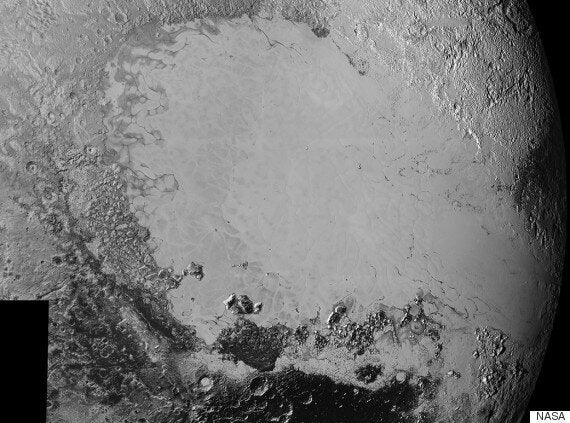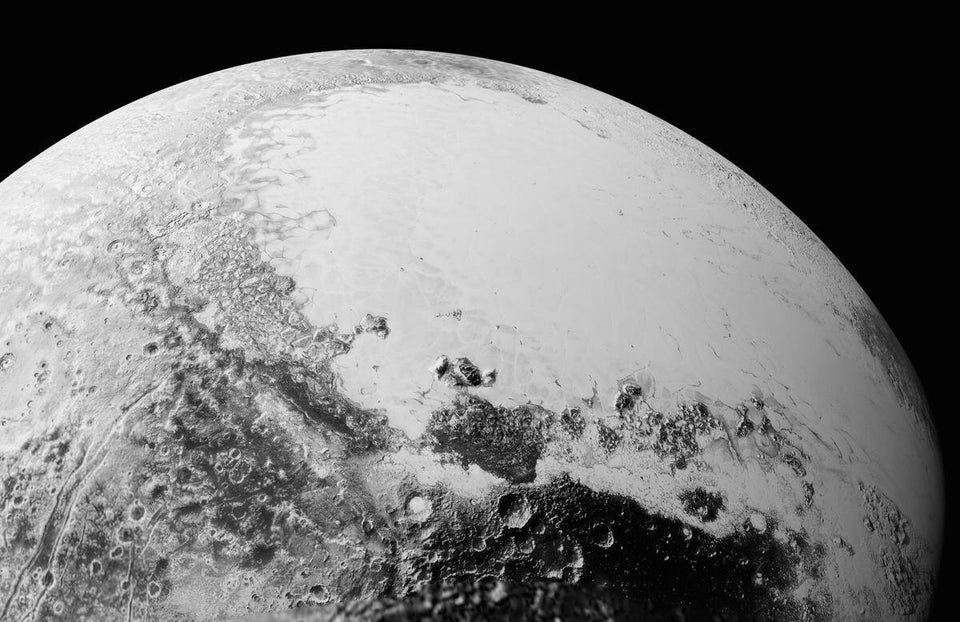New Horizons latest close-up images of Pluto have revealed a bewildering variety of features that have left scientists reeling, NASA has said.
The data dump that happened over the US' Labour day weekend stunned researchers who were not expecting the dwarf planet's surface to be so complex.

The pictures have more than doubled the amount of Pluto’s surface researchers have been able to see at resolutions of 400 meters per pixel.
"Pluto is showing us a diversity of landforms and complexity of processes that rival anything we’ve seen in the solar system,” said New Horizons Principal Investigator Alan Stern.
“If an artist had painted this Pluto before our flyby, I probably would have called it over the top — but that’s what is actually there.”
According to the team these features could be as diverse dunes, nitrogen ice flows and a network of valleys.
SEE ALSO:
- Pluto And Charon Close-Up Pictures From New Horizons 'Amazes' NASA Scientists
- Amazing Nasa Pluto Image Is Proof That NONE Of These Things Are On Its Surface
- Pluto Might Become A Planet Again, Along With Ceres, If NASA Missions Answer The Right Questions
- NASA's New Horizons Pluto Team Does Reddit AMA And Reveal Fascinating Details About The Mission
- NASA's New Horizons #PlutoFlyBy Success Accurately Summarised In A 16-second Video
The images also show a region of jumbled mountains that bear a strong resemblance to Jupiter's moon Europa.
“The surface of Pluto is every bit as complex as that of Mars,” said Jeff Moore, leader of the New Horizons Geology, Geophysics and Imaging team.
“The randomly jumbled mountains might be huge blocks of hard water ice floating within a vast, denser, softer deposit of frozen nitrogen within the region informally named Sputnik Planum.”
However, scientists are still scratching their heads as to what exactly forms the dwarf planet's surface.
“Seeing dunes on Pluto -- if that is what they are -- would be completely wild, because Pluto’s atmosphere today is so thin,” said William B. McKinnon, who works on the imaging team.
“Either Pluto had a thicker atmosphere in the past, or some process we haven’t figured out is at work. It’s a head-scratcher.”
